
views
X
Research source
Reaching His Majesty and Writing a Salutation

Outline your ideas. Make an outline of exactly what topics you'd like to say in your letter to better organize. Include an order of what you'd like to accomplish, so you are focused in your approach. For each bullet item, make sub-bullets to further clarify each point. Be sure to divide your thoughts with different forms of bullets, including Roman numerals, lowercase letters, and numbers.
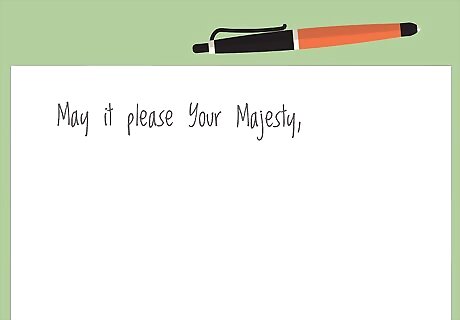
Address The King properly. Giving proper respect is very important. Your Majesty or May it please Your Majesty are the preferred terms. While it may be more appropriate to address His Majesty’s Private Secretary or, you can direct the correspondence to The King. The Royal family also accepts the less formal Sir” substitution. If your correspondence is with an aide, abide by the following rules: The first reference should be His Majesty The King All other instances should be The King Third person pronouns should be replaced with His Majesty
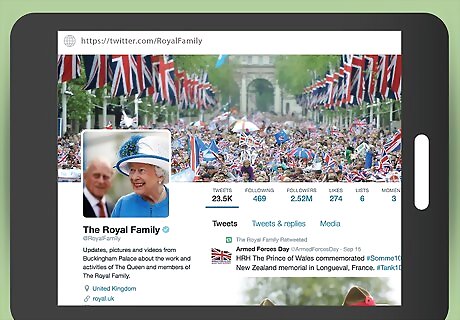
Contact The King online. While His Majesty does have an email address, it's not exactly public. There would no doubt be a flood of emails if it were. If you'd like to shoot a quick message, however, the official Twitter account for the Royal family is https://twitter.com/RoyalFamily (@RoyalFamily). It appears His Majesty uses it instead of the now defunct individual account.

Manage expectations. The Monarch receives a large amount of mail, and it’s courteous to consider the volume of mail a head of state receives. It would not be inappropriate to ask for an answer or a reply, even if one is not likely. Do not expect a reply from His Majesty. If you are lucky enough to receive a reply, it will be signed by the a member of the King's staff of official writers.
Writing the Letter Body
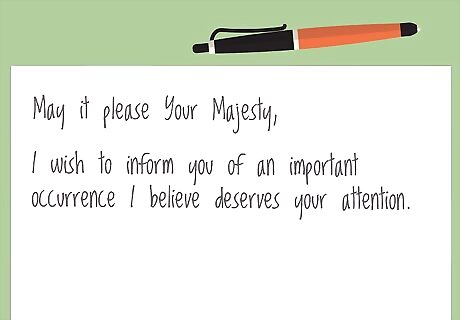
Draft the body of your letter. In a polite, formal tone, state your purpose clearly and concisely. It is courteous to briefly inform the reader of the general purpose of your letter, follow with a detailed explanation, then finish with a summary or final plea. Be wary of what you write, however. The King is a constitutional monarch, so letters to him asking for personal or political support of any kind are ill-advised. A proper tone: "I wish to inform you of an important occurrence I believe deserves your attention." An improper tone: "I demand that my local football association get recognition!"
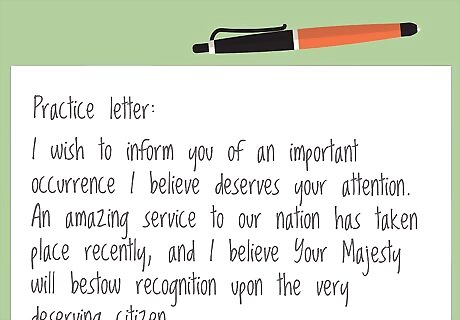
Write a practice letter. You may want to write your entire letter and really review how it's structured, analyze its flow, and determine if it conveys the true intention. Once complete, try reading any unclear portion of the practice letter out loud to see if it sounds correct to you. Try sharing your practice letter with a friend or family member. Another set of eyes may find a mistake or provide a better way of presenting your idea. A potential start: I wish to inform you of an important occurrence I believe deserves your attention. An amazing service to our nation has taken place recently, and I believe Your Majesty will bestow recognition upon the very deserving citizen.
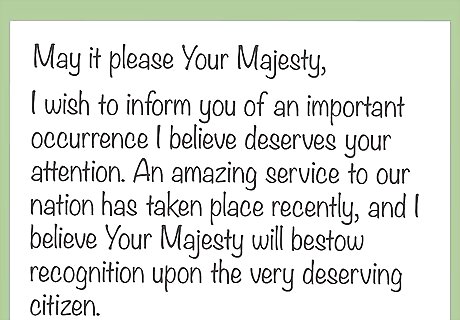
Ensure the letter is readable. Legibility can go a long way towards recognizing the letters and words, which makes the sounds and meaning easier to comprehend. Additionally, The King is more likely to want to read your letter if the penmanship is neat. Really put an effort into your penmanship so it appears that you put care into the letter. Follow a few common practices below: Don't use an extravagant or difficult to read font. Avoid overly narrow fonts. Black or blue ink is preferable. Lighter colors may be difficult to read. Use standard punctuation, grammar, and capitalization. Steer clear of practices specific to the web (e.g. All caps for yelling, internet acronyms like "lol", and emoticons).
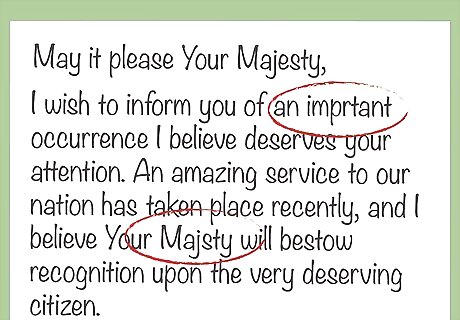
Proofread your letter. You need to be positive there are no typos, grammar mistakes, or stylistic issues. Be sure to take time after your initial writing to do the proofreading, because you may miss issues since the original content is fresh in your mind. Read a single line at a time. Try obscuring the following line so your eyes can really focus on potential errors. You can check for errors by reading your letter from the end to the beginning, one word at a time. If you are typing rather than handwriting, use spell/grammar check.
Closing and Sending Your Letter
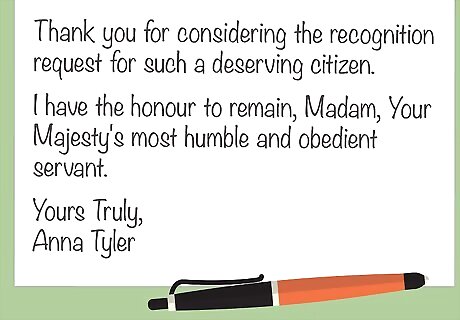
Sign off properly. Quickly summarize your request (e.g. Thank you for considering the recognition request for such a deserving citizen.). Then, if you are a citizen of the United Kingdom, you should end the letter with "I have the honour to remain, Sir, Your Majesty's most humble and obedient servant." You could also replace the word servant with subject. If you are not a citizen of the U.K., choose a respectful closing such as one of the following: Yours Truly works perfectly because it’s commonly used when sending a letter to someone of stature. Yours Sincerely is also an accepted closing line.
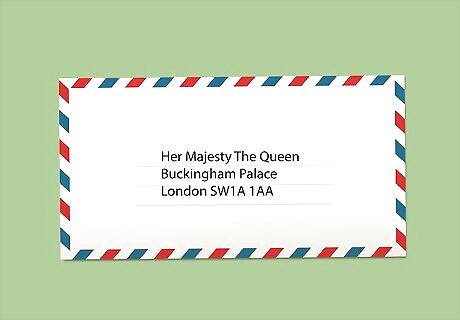
Address the envelope. Write your name and address in the upper left corner. You may receive a reply letter directly from The King, or you may receive a letter from His Majesty’s staff. The destination address should be as follows: His Majesty The KingBuckingham PalaceLondon SW1A 1AA
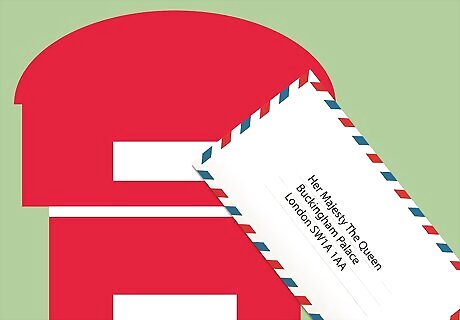
Mail the letter. Fold the letter into three equal sections. For such an important letter, it may even be worthwhile to measure out the folds before bending the paper. Use the envelope as a guide for the first third measurement. Once the paper is folded, place it in an envelope and send it to The King. Acquire proper postage. Depending on your location, and the letter's weight, there may be a somewhat substantial cost to mail the letter to London. If you include something other than the letter, be careful to consider the list of various prohibitions on mail to Great Britain.




















Comments
0 comment